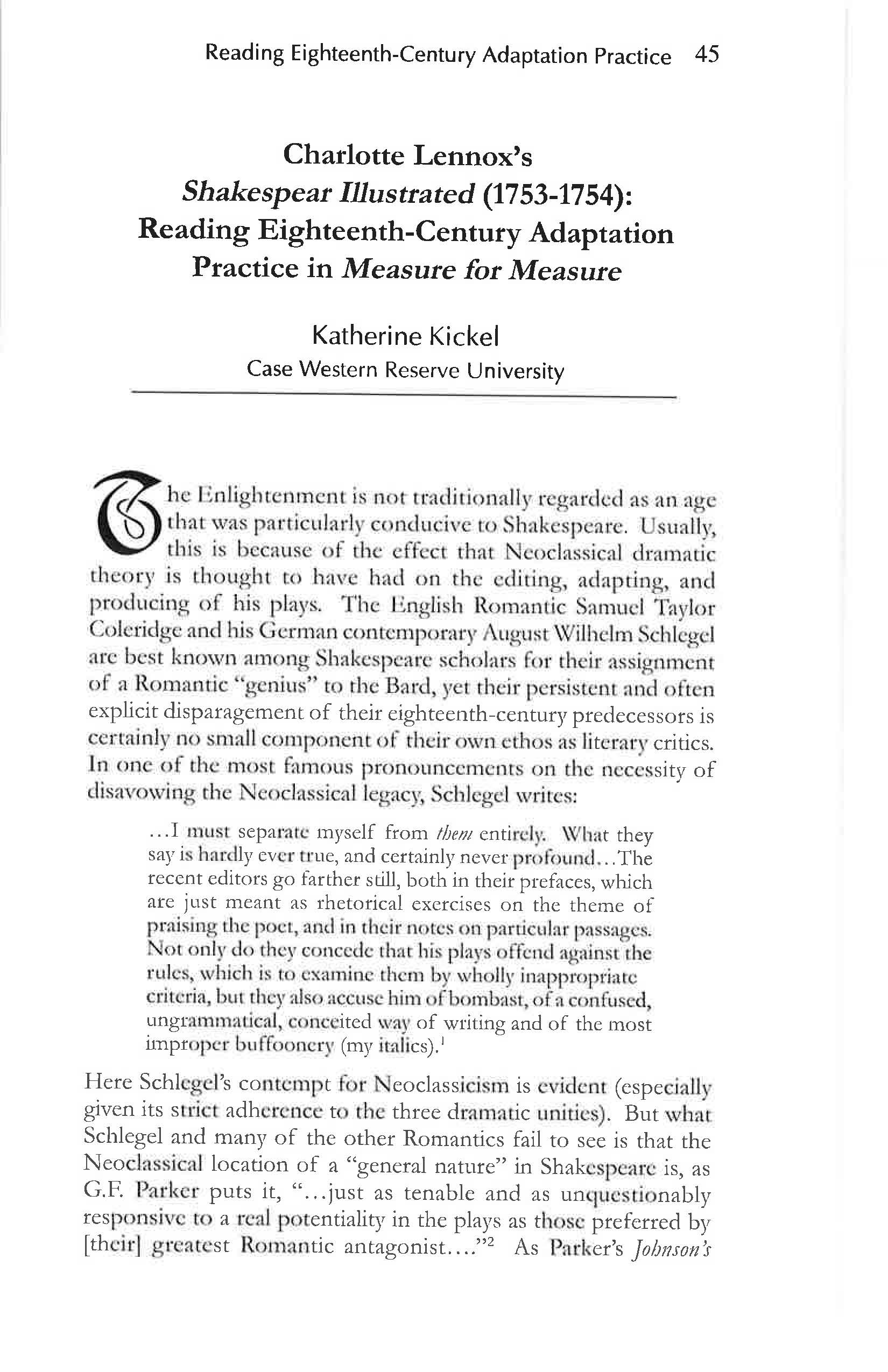Charlotte Lennox's Shakespeare Illustrated (1753-1754): Reading Eighteenth-Century Adaptation Practice in Measure for Measure
Main Article Content
Abstract
The Enlightenment is not traditionally regarded as an age that was particularly conducive to Shakespeare. Usually, this is because of the effect that Neoclassical dramatic theory is thought to have had on the editing, adapting, and producing of his plays. The English Romantic Samuel Taylor Coleridge and his German contemporary August Wilhelm Schlegel are best known among Shakespeare scholars for their assignment of a Romantic “genius” to the Bard, yet their persistent and often explicit disparagement of their eighteenth-century predecessors is certainly no small component of their own ethos as literary critics. In one of the most famous pronouncements on the necessity of disavowing the Neoclassical legacy, Schlegel writes:
…I must separate myself from them entirely. What they say is hardly ever true, and certainly never profound…The recent editors go farther still, both in their prefaces, which are just meant as rhetorical exercises on the theme of praising the poet, and in their notes on particular passages. Not only do they concede that his plays offend against the rules, which is to examine them by wholly inappropriate criteria, but they also accuse him of bombast, of a confused, ungrammatical, conceited way of writing and of the most improper buffoonery (my italics).1
